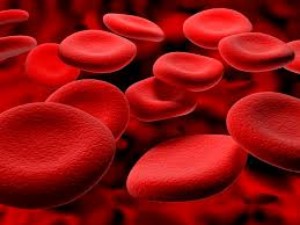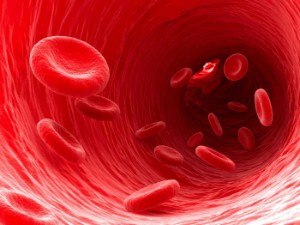List of 6 products that increase blood clotting + 6 general rules of nutrition
 Blood clotting is the process of blood clot formation, by which damage to the walls of blood vessels is blocked. In this case, platelets, which are often called blood plates, form the same thrombus. Fibrinogen also affects this process – a special protein in the blood plasma, which is broken down into fibrins when platelets are activated.
Blood clotting is the process of blood clot formation, by which damage to the walls of blood vessels is blocked. In this case, platelets, which are often called blood plates, form the same thrombus. Fibrinogen also affects this process – a special protein in the blood plasma, which is broken down into fibrins when platelets are activated.
And what does increased or decreased blood clotting mean and how dangerous is it? Is it possible to change this indicator by adjusting the diet? What foods should be included in the diet for poor clotting to improve it?
Content
How does the blood clotting process work?
The first step is to understand the very process of coagulation of blood. When the walls of blood vessels are damaged, certain groups of proteins present in plasma are oxidized. They, in turn, activate the defense mechanism, literally stimulating the nearest platelets.
 At the same time, processes form on the walls of blood plates, with the help of which platelets tightly connect to each other, forming a single dense blood clot (when the leaked blood "coagulates", a similar process occurs).
At the same time, processes form on the walls of blood plates, with the help of which platelets tightly connect to each other, forming a single dense blood clot (when the leaked blood "coagulates", a similar process occurs).
The rate of coagulation directly depends on Fibrinogen concentrations and platelets in the blood. However, if their level is too high, there is a high probability of activating the process without damaging the walls of blood vessels. In this case, a blood clot forms, which can stick to the vessel wall and thereby worsen blood flow. Most often, this happens at all in those places of the circulatory system where there are valves (mainly in the lower extremities, in the heart).
What is the normal rate of blood clotting? This is when the so-called Thrombin time (INR) is from 10 to 17 seconds . This is the period when platelet excitation occurs, the formation of processes on their outer walls.
The fibrinogen concentration is also determined during the analysis. The optimal indicator is from 2 to 4 mg per liter of plasma .
In some diseases, the process of platelet formation itself is disrupted, which significantly slows down blood clotting. For example, this happens in diabetes mellitus.
6 nutrition rules to increase the indicator
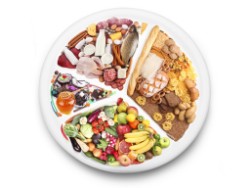 It's worth starting with the fact that blood clotting is directly influenced by blood pressure and blood unit density. That is why the analysis can show platelet deficiency
and fibrinogen, but the patient may have a high risk of blood clots.
It's worth starting with the fact that blood clotting is directly influenced by blood pressure and blood unit density. That is why the analysis can show platelet deficiency
and fibrinogen, but the patient may have a high risk of blood clots.
Accordingly, before introducing certain rules into the diet, it is necessary to consult with your doctor, ideally with a gemologist. This doctor is fully specialized in diseases of the blood and hematopoietic system.
If blood clotting is lowered, but at the same time blood pressure and biochemical composition of the blood are optimal, then for increase in platelet levels and fibrinogen should follow the following list of rules:
- Healthy eating. First of all, foods rich in animal fats and cholesterol should be excluded from the diet. It is because of them that most often Blood viscosity increases dramatically , which provokes the development of atherosclerosis in the future.
- Minimum sugar. High glucose levels worsen coagulation and slow down this process. That is why patients with diabetes mellitus (even if we are talking about those with type 2 disease, that is, when the body produces insulin) often have trophic ulcers - the very process of tissue healing is disrupted due to delayed blood clotting.
- Increase in the amount of protein consumed. Moreover, most of them should be vegetable proteins, as well as those contained in animal by-products (liver, lungs, kidneys, heart, and so on).
- Temporary withdrawal from vitamin complexes. As practice shows, an excess of certain groups of vitamins (in particular, E, B-groups and A) causes an increase in blood coagulation time. If there is such an opportunity, they are temporarily abandoned. Vitamin supplements should also be included here.
- Heavy drinking. It is necessary to consume at least 1.5 – 2 liters of liquid per day. This will help to normalize the water-salt balance, which will directly affect both the viscosity of the blood and the process of its coagulation.
- Be sure to include foods rich in omega-3 acids in your diet. They simultaneously reduce the concentration of cholesterol, blood viscosity, but increase the level of platelets and fibrinogen. As a result, the process of blood coagulation is normalized.
6 Blood Thickening Products
To increase blood clotting, it is recommended to include the following products in the diet that improve its quality:
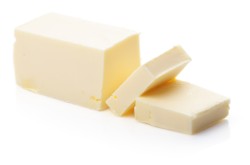
- Butter. is one of the safest "animal" fats, with virtually no effect on blood viscosity.
- Animal by-products. Liver, kidneys, lungs, heart, stomach – all this is a source of easy-to-digest protein, from which fibrinogen is subsequently formed in the liver. At the same time, there is a minimum of fat in such products, so it will not cause an increase in the level of the same cholesterol.
- Buckwheat porridge. Among all cereals, buckwheat increases coagulation. Rice and oatmeal are less effective. The rest of the porridges should be discarded. Also buckwheat raises hemoglobin .
- Legumes. Are very rich in vegetable proteins, increase fibrinogen levels, as well as blood viscosity. With high blood pressure, it is better to abandon them, but with hypotension, they are necessarily included in the diet.
- Muffin. Is rich in glucose and proteins, which mainly increases blood viscosity. With high sugar, of course, they are excluded from the diet.
- Sea fish. Red and black caviar should also be included here. All these products are rich in omega-3 unsaturated fatty acids, which reduce cholesterol concentration, normalize blood viscosity, and optimize hematopoietic function. All this increases the concentration of platelets.
Folk methods
Among folk methods, the following recipes will help to increase blood clotting (they are often recommended by doctors themselves):

- Ghee with yarrow. Will help accelerate platelet production, as well as normalize liver function (preventing oxidation of organ cells). For cooking, take 100 milliliters of melted butter, heat it in a water bath, mix with 30 grams of grated fresh yarrow. Next, let it cool down, mix thoroughly. The resulting oil should be consumed 0.5 teaspoons 3 times a day. It tastes pretty nasty. Take it before the end of the prepared medicine.
- Turmeric infusion. For cooking, take a spice (you can buy it in the store), mix it in a ratio of 1 to 1 with ordinary water. You will get a mass similar to plasticine. So they take her under the tongue. The recommended dosage is 1 gram, 2 times a day. It also tastes pretty nasty. Such a remedy will help to normalize hematopoietic function.
And what reduces clotting?
Reducing blood clotting are:
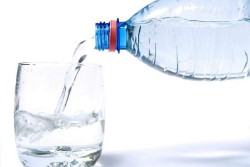
- Vegetarian diet. In most cases involves the consumption of large amounts of fruits and concentrated juices. All this is a factor that increases the acidity of the blood and reduces its density.
- Excessive fluid intake. The optimal rate is up to 2 liters per day. If you drink more, then blood is thinning , clotting is also slowing down.
- Red wine in small quantities. Is strictly contraindicated in low platelets. Surprisingly, in large quantities alcohol thickens the blood , but you should not use this method of treatment – the harm from alcoholic beverages to the circulatory system is huge.
- Chocolate. In particular, cocoa reduces coagulation. Therefore, it should be completely abandoned, replaced with other desserts.
- Green tea. Has become extremely popular lately, as many believe that it is less harmful than black. But it reduces clotting, which is why green tea is strictly forbidden to drink in diabetes mellitus. It is better to give preference to ivan tea and other anticoagulant herbs.
Also dramatically reduces blood clotting by reducing the amount of protein foods in the diet. This happens with low-calorie diets. It is because of this that women are advised to avoid them.
Why is it important to monitor this during pregnancy?
 The homeostasis system in the body of the expectant mother is changing dramatically. And if all this leads to low blood clotting, then there is a high risk heavy bleeding
directly during childbirth.
The homeostasis system in the body of the expectant mother is changing dramatically. And if all this leads to low blood clotting, then there is a high risk heavy bleeding
directly during childbirth.
That is why during pregnancy you have to take a blood test from a vein almost weekly. This helps to detect pathology in a timely manner and establish the risk of complicated childbirth.
Useful Video
We recommend watching this video:
;
Conclusion
In total, blood clotting is directly affected by the concentrations of fibrinogen and platelets in the blood. And it is quite possible to influence them by adding certain foods to the diet that contribute to their increase.
What is the danger of reduced folding? The development of pathologies of the circulatory system, in particular, cerebral hemorrhage, complications during childbirth. And, as practice shows, with low blood viscosity, migraine often develops – a disease of the cerebral vessels (it is 4 times more common in women). That is why it is extremely important to control this parameter.
